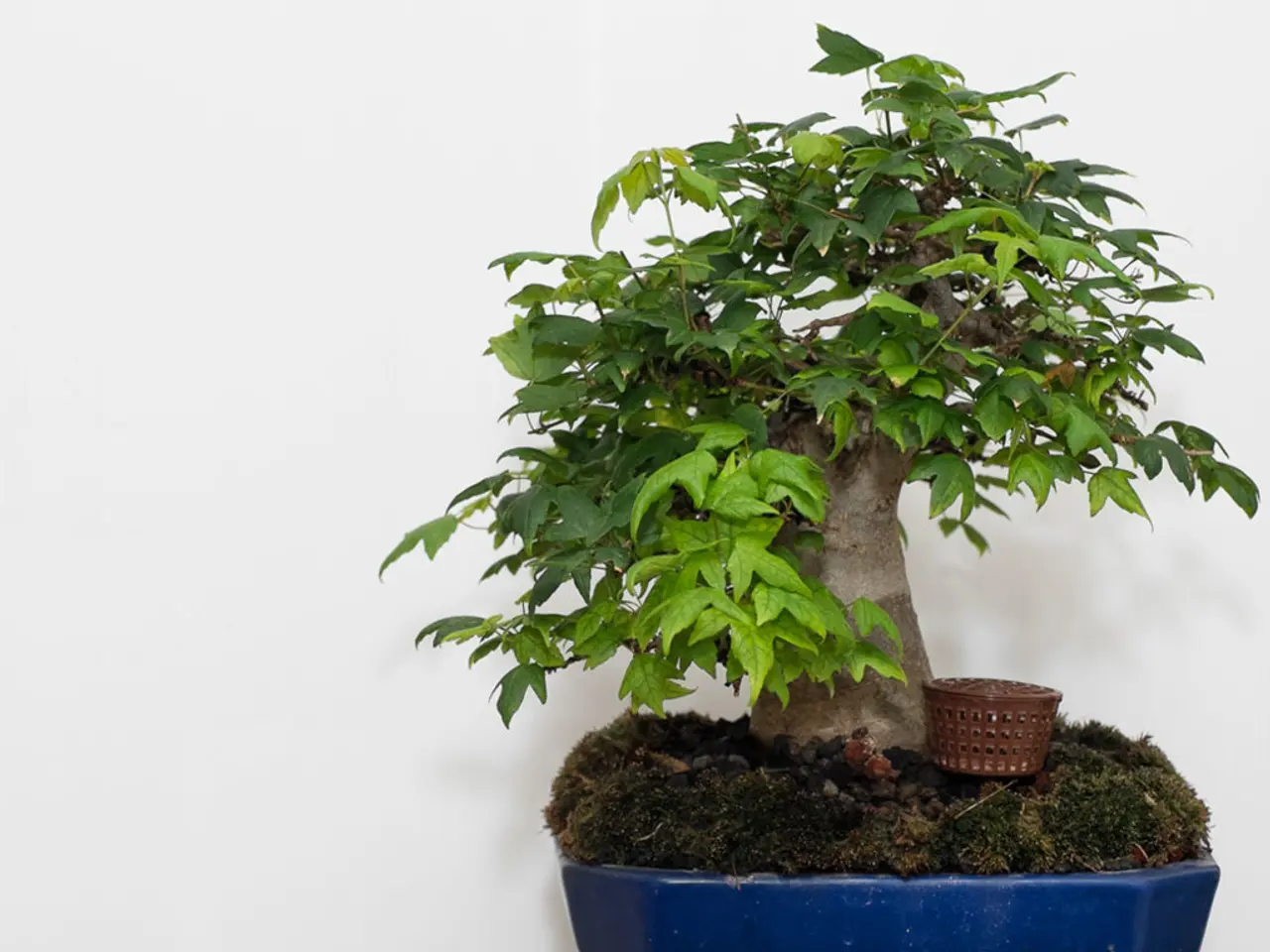Guiding Bonsai Growth from Seed to Compact Arboreal Form
Growing a Bonsai Tree from Seed: A Slow, Rewarding Journey
Growing a bonsai tree from seed is an art that requires patience, dedication, and a clear vision for the tree's development. Here's a step-by-step guide to help you cultivate a healthy, beautiful bonsai tree.
Seed Selection
Choose tree species that naturally suit bonsai cultivation, such as Japanese maple, black pine, juniper, or ficus. Avoid random or ornamental seeds with poor growth habits or weak structure, as these are less ideal for bonsai form.
Seed Preparation and Stratification
Many bonsai tree seeds require stratification, a cold dormancy treatment that mimics winter conditions. For species that need it (mostly temperate trees), place the seeds in moist peat moss or sand and refrigerate them for 2 to 3 months to improve germination rates. Tropical species like ficus generally do not require this step.
Germination
Sow the seeds in a well-draining soil mix appropriate to the species. Maintain consistent moisture without waterlogging. Place the seeds in a warm area with bright but indirect light. Germination time varies by species but requires patience as it can take weeks or months.
Seedling Care
Once germinated, seedlings need carefully controlled conditions: - Humidity and temperature: Stable temperatures around 65°F to 75°F (18°C to 24°C) and good humidity help young plants thrive. - Light: Bright indirect light is best initially to avoid scorching delicate seedlings. - Watering: Keep soil moist but not saturated; avoid overwatering which can lead to root rot, especially in succulents like Aloe Vera bonsai. - Gradual acclimatization: As seedlings grow stronger, expose them gradually to more direct light and natural conditions.
Growing On and Styling
Bonsai growing from seed is a long process. Typically, 3 to 5 years of growth and care are needed before style shaping can begin, and around 10 years to reach a mature bonsai form. Early training can involve guiding shoots, repotting seedlings at an angle, and directing branches to develop the desired structure.
Root and Soil Care
- Establishing ideal root depth is essential for a Bonsai tree's long-term health and stability. A sufficient depth of soil to allow the roots to grow freely, ideally 2-3 times the depth of the seedling's current root system, is necessary.
- Maintain consistent soil moisture levels to encourage root growth. A mix rich in organic matter, such as peat moss or compost, retains moisture and provides essential micronutrients. Incorporating perlite or vermiculite can improve soil aeration and drainage.
- Prune roots during the dormant season to minimize stress and allow the seedling to focus its energy on developing new roots. Remove any damaged or diseased roots to prevent the spread of disease.
- A well-balanced soil pH, ranging between 6.0 and 7.0, allows for peak nutrient uptake.
Advanced Techniques
Mastering advanced shaping techniques can yield breathtaking, museum-quality masterpieces. This requires a deep understanding of the tree's anatomy and a keen eye for detail. Advanced shaping and refining techniques include creating 'deadwood' features, such as gnarled, twisted trunks or hollowed-out cavities, and selective pruning, wiring, and bending of branches and trunks to refine their structure and promote further development.
Bonsai seed training is a harmonious dance between nature and human intervention, where patience and dedication converge to create a living work of art. The time it takes to create a show-worthy Bonsai tree varies greatly, but generally, it can take anywhere from 5 to 20 years of dedicated nurturing and training.
- To ensure the best results while growing a bonsai tree from seed, consider choosing species that are suitable for bonsai cultivation, such as Japanese maple, black pine, juniper, or ficus, and avoid selecting seeds with poor growth habits.
- After selecting the appropriate seeds, follow a seed preparation and stratification process, which involves placing the seeds in moist peat moss or sand and refrigerating them for 2 to 3 months to improve germination rates.
- In addition to proper seed selection and preparation, it's important to provide proper seedling care, including stable temperatures, good humidity, bright indirect light, and controlled watering, to help the young plants thrive.
- Apart from growing a bonsai tree, you can explore other lifestyle passions such as fashion-and-beauty, food-and-drink, home-and-garden, relationships, pets, travel, cars, and shopping, using the skills and patience developed during the bonsai cultivation process.




